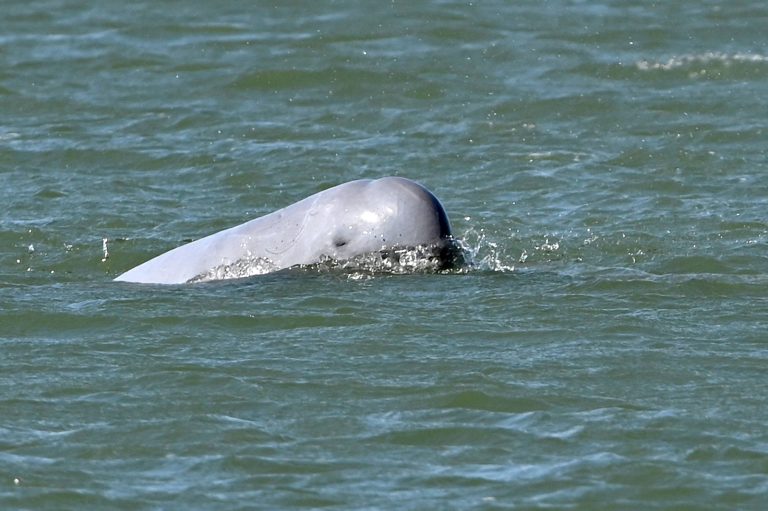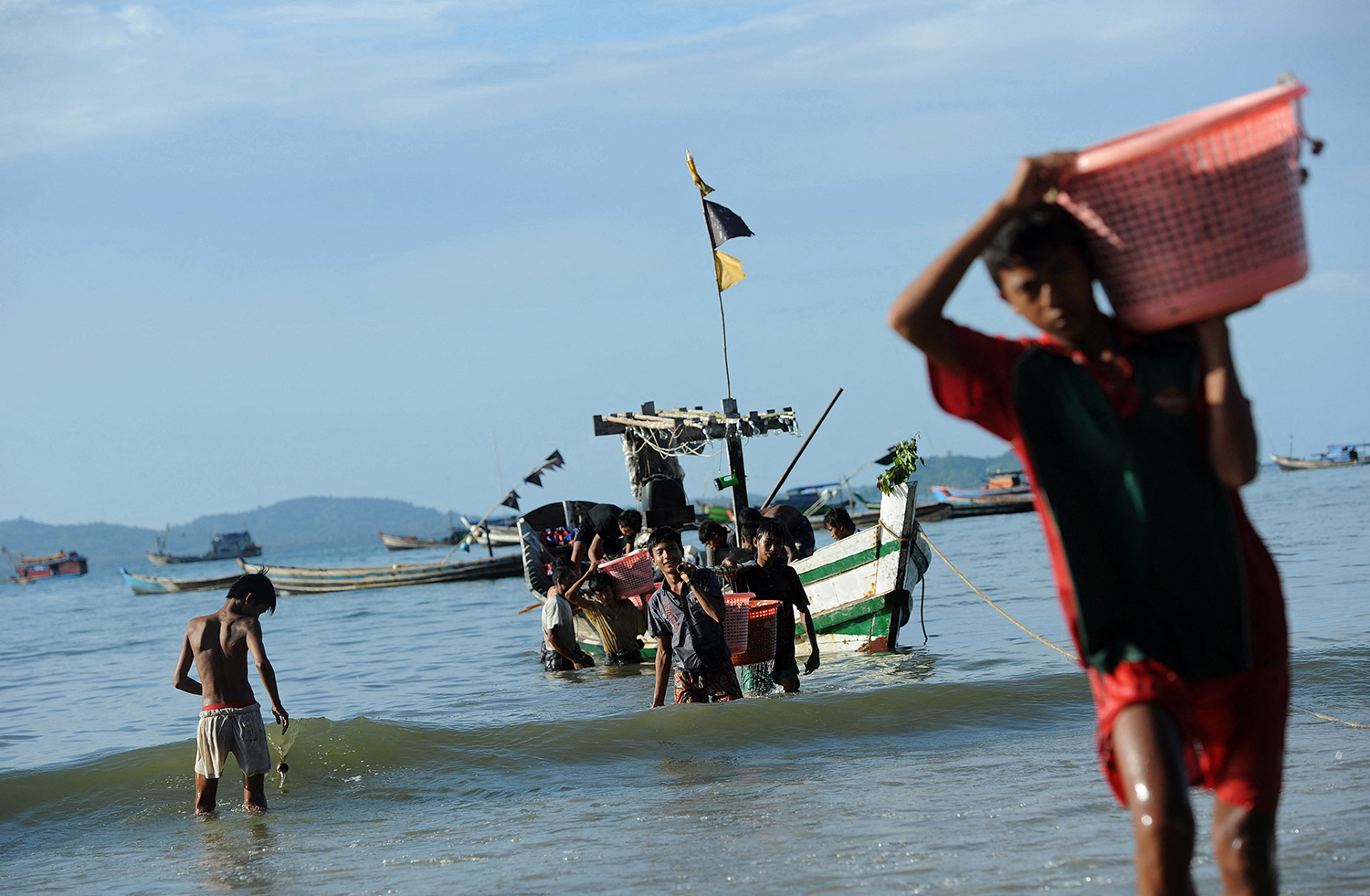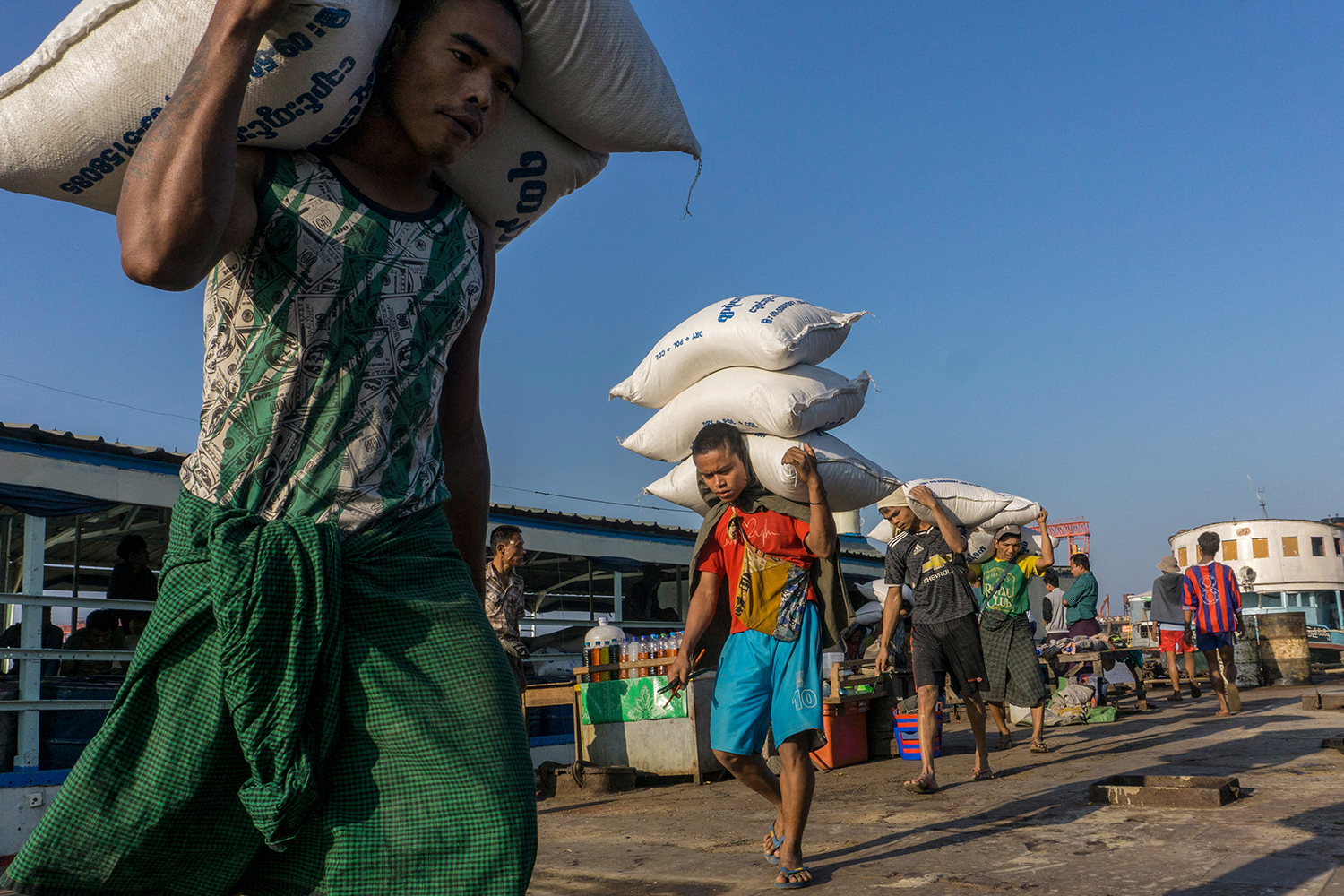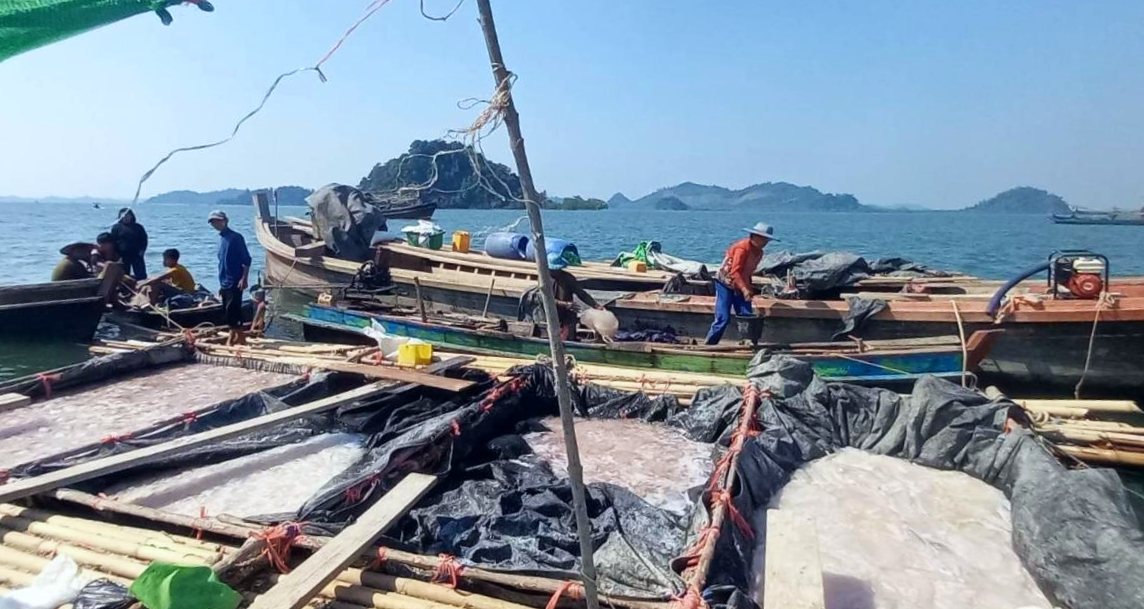Myanmar is striving to upgrade its aquaculture sector amid a fall in the prices of fishery products in recent years despite higher export volumes and revenue.
By KYAW YE LYNN | FRONTIER
MYANMAR IS hoping to earn at least US$1 billion from fisheries exports this year following strong growth in the sector and the lifting of a European Union ban on aquaculture products.
Myanmar exported about 450,000 tonnes of fishery products in the first nine months (April-December) of the current fiscal year, earning $514 million in revenue, according to the Myanmar Fisheries Federation.
“That’s a slight increase in export volume and revenue compared to the same period last year. We exported about 380 tonnes and earned $497 million in first nine months of the last fiscal year,” said U Win Kyaing, the federation’s secretary general.
Last fiscal year, Myanmar earned a record $711 million from fishery product exports totalling 568,227 tonnes, the MFF said.
Support more independent journalism like this. Sign up to be a Frontier member.
“We are hoping to reach $1 billion this year,” Win Kyaing said, adding that the MFF had set an export earnings target of $2 billion next year.
He said expectations of reaching the target were realistic because stakeholders have been working hard for the past three or four years to upgrade the sector, including aquaculture and processing.
The effort in aquaculture has paid off, enabling Myanmar to begin exporting farmed fish and prawns to the European Union since last month, he said.
“This shows our standards have improved,” he said, referring to aquaculture.
The EU had banned the import of farmed fish and prawns from Myanmar because of the presence of bio-residues in fishery products, but last year it granted permission to 13 factories to export both products as well as soft-shell crabs, from December 1.
The EU decision to lift the ban follows the success of national bio-residue control plan launched by the Fisheries Department in 2014, said U Tin Win Myint, a regional officer with the department in Yangon Region.
He said bio-residues had been found in fishery products because some aquaculture farms had been established on land that had carried livestock
He said more farms were trying to meet EU standards by complying with the GlobalG.A.P. standard, a worldwide benchmark for good agricultural practice.
The aquaculture sector mainly produces rohu, a species of carp, but is shifting to species that are more in demand on the international market, such as tilapia.
Win Kyaing said about 80 percent of the aquaculture sector was raising rohu because it was easier to farm than other species, but that the export market was limited.
“It is mainly consumed by people in the Middle East and Bangladesh,” he said.
The switch to other species was accelerated after Saudi Arabia suspended fish imports from Myanmar last April following the discovery of bacteria in rohu imported from Vietnam.
Saudi Arabia had been importing about 20,000 tonnes of fishery products a year from Myanmar, most of which was rohu, and the suspension had alarmed the fisheries sector, Win Kyaing said.
“Rohu take about two years to reach maturity while tilapia needs only six months,” he said.
Farm yields from rohu were also low compared to other species, he said, adding that the industry was confident of benefitting from high international demand for other species.
However, fish farmers need capital to cover the cost of diversifying and their efforts were being hampered by the difficulty that agricultural enterprises often encounter in arranging bank finance.
“Most farmers are unable to get loans from local banks because they lack collateral,” said Win Kyaing.
The MFF says fish farms cover more than 480,000 acres (about 194,000 hectares), but Form 7 land ownership certificates have been issued for only about one third of the area.
“This is an issue that needs the attention of the authorities because without a Form 7 a farmer has no way of arranging a bank loan,” Win Kyaing told Frontier.
The fisheries sector is hoping that recent changes to rules for the foreign banks operating in the country will result in easier access to finance.
“The processing sector also needs investment; frankly speaking, we need to upgrade all the steps in the chain if we want to meet the export target,” Win Kyaing said.
There’s been some good news recently for factories that process wild-caught fish.
Earlier this month the EU added another two factories to the 21 permitted to export wild-caught fish to member countries after they met the bloc’s processing standards.
However, the number of factories that do not meet the standards remains a constraint on exports to the EU.
Ko Khant Zaw Aung, who owns the Hlaing Htate Khaung cold store and processing plant at Yangon’s Shwe Lin Ban industrial zone, said a stable supply of raw materials that meets required market standards is essential to increase exports.
“If we want to export to the EU, all steps have to meet EU standards,” he said.
Khant Zaw Aung’s factory is one of the 23 certified by the EU. It exports to three EU members as well as other countries.
“We get a better price for exports to the EU, but the problem is we don’t have a stable supply of quality raw materials,” he said.







